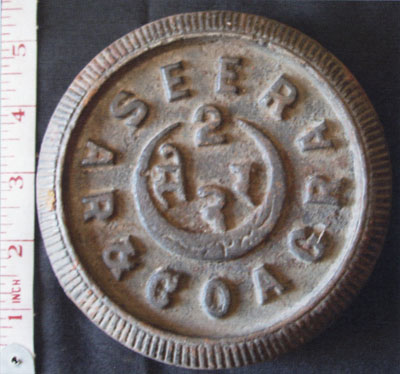
The complex meanings associated with material culture offer many challenges for the study and interpretation of artifacts associated with Ladakh’s history of trading. Many of these artifacts highlight the difficulty of categorizing a particular region within a a single “culture area.” For example, if we displayed the artifact below in a museum, where would it be placed? Should it be part of a display on the British Empire, emphasizing the role it played in the political administration of this part of South Asia under the Raj? Or should it be part of a display on Ladakh’s long history of trading, focusing our attention on the region’s role in facilitating cultural contact between South and Central Asia? The choice depends on the particular narrative the researcher or museum curator wishes to display, but a full understanding of the significance of the artifact involves seeing it within its broader historical, social, economic, and political framework.
